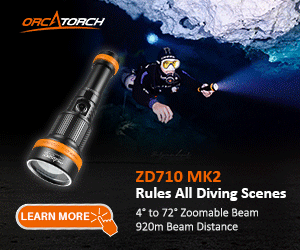Rebreather Pro Eric Stadtmueller shares his thoughts about Shearwater Pursuit, Liquivision X1 and V-Planner/V-Planner Live
While I've been following patiently the development of the Apecs 3.0 electronics as a replacement upgrade for my Apecs 2.00, I've also been
keeping my eye on a few other developments. I currently run a
non-integrated VR3 with hard tables cut from V-Planner as backup. I also carry a 21/30? IANTD deco table in my Wet Notes just in case. The problem that many rebreather divers seem to have is the ability to make their planning software and their dive hardware match up with any consistency. Click here to read the rest of the article.
Then come back to ScubaBoard and let's discuss it. You can click the ScubaBoard icon on my website to return. --Jill
While I've been following patiently the development of the Apecs 3.0 electronics as a replacement upgrade for my Apecs 2.00, I've also been
keeping my eye on a few other developments. I currently run a
non-integrated VR3 with hard tables cut from V-Planner as backup. I also carry a 21/30? IANTD deco table in my Wet Notes just in case. The problem that many rebreather divers seem to have is the ability to make their planning software and their dive hardware match up with any consistency. Click here to read the rest of the article.
Then come back to ScubaBoard and let's discuss it. You can click the ScubaBoard icon on my website to return. --Jill



